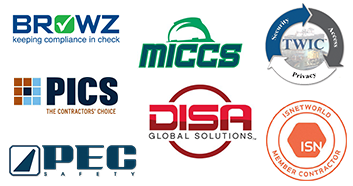Fiberglass Pipe Fittings: Where Materials and Human Capital Converge
There are many important design considerations that are fundamental to designing any fiberglass pipe system. For example, operating temperature, service environment or media, pressure, vacuum, and temperature are all critical design aspects that need to be considered. Similarly, there is a necessity to acknowledge the coterminous and interconnected relationship that exists between pipe, joints and fittings as well as the level of human capital applied within the context of aggregate pipe system and performance.
To speak in certain terms, no two fiberglass pipe systems are created equal; to a large degree the quality of fiberglass materials are relative to the level of expertise, experience, as well as, technical knowledge and skills a given labor force has, in this case we are referring to resins and adhesives as primary materials. A key takeaway from this article is that there is an assumed positive correlation between performances of a joint or pipe system and whether or not it’s properly fabricated/completed. For example, with respect to a weld or adhesive joint, there are some important considerations that will ultimately affect the end-user’s product. Considerations such as proper mixing of adhesives or resins, properly prepared joint (shaved, ground), proper curing conditions (dry, temperature, stable), properly trained personnel, and correct resin/adhesive for the type of pipe are included.
Another key takeaway from this article is that in many senses working with fiberglass is an art. This art or acquired skill is founded in the understanding of science, technology, and materials and at the same time constrained by conventional standards, investment of human capital and the notion of precision—among other things. It can be inferred that without a firm understanding of the standards and adherence to them there can be no art or no high quality product produced.
In other words, paramount to achieving fiberglass materials that are optimized for performance, one must understand the basic concept of investment in human capital or that increasing the labor component, a factor of production, is proportional to the resources invested. Beetle has invested heavily in human capital and has created a culture of learning—this is one of our competitive edges. We possess a high level of expertise at all stages of the manufacturing process. This fundamental approach, of offering the best training and education to our team, has developed a forward-thinking technical culture of highly skilled workers. More importantly it contributes to the high quality of our fittings and joints. For example, many of Beetle’s technicians are trained and certified in the following areas:
Certifications
- ACMA Certified Composite Trained
- SSPC QP1 Certified: Field Application to Complex Industrial and Marine Structures
- SSPC QP2 Certified: Field Removal of Hazardous Coatings
- OSHA 10, OSHA 30
Certifications (Bonder)
- ASME B31.3 Certified
- CCT Certified (ACMA)
- TWIC Certified
- OSHA Confined Space Certified
Fiberglass joints and fittings of one type or another are essential element of most pipe systems. Beetle offers a wide range of custom fittings; adapters, bushings, couplings, outlets, reducers, crossers, laterals and tees—just to name a few.
Beetle’s custom fittings include:
Adapters
- Bell x NPT Thread (Male or Female Threads Available)
Bushings and Couplings
- Threaded Adapter Bushings
- Reducer Bushings
- Pipe Couplings
- Threaded (NPT) Couplings
Elbows
- Elbows, standard are 22 1/2°, 30°, 45° and 90°
- Elbows through 48″ Ø are available as smooth radius
- Mitered Elbows- available in all sizes
- Reducing Elbows
Flanges
- Blind Flanges
- Threaded Flanges
- Reducing Flanges
- Orifice Flanges
Outlets
- Bell Outlets
- Spigot Outlets
- Flanged Outlets
- Saddles, with FRP and Stainless Steel Threaded Outlets
Reducers
- Concentric Taper Body Reducers
- Eccentric Taper Body Reducers





